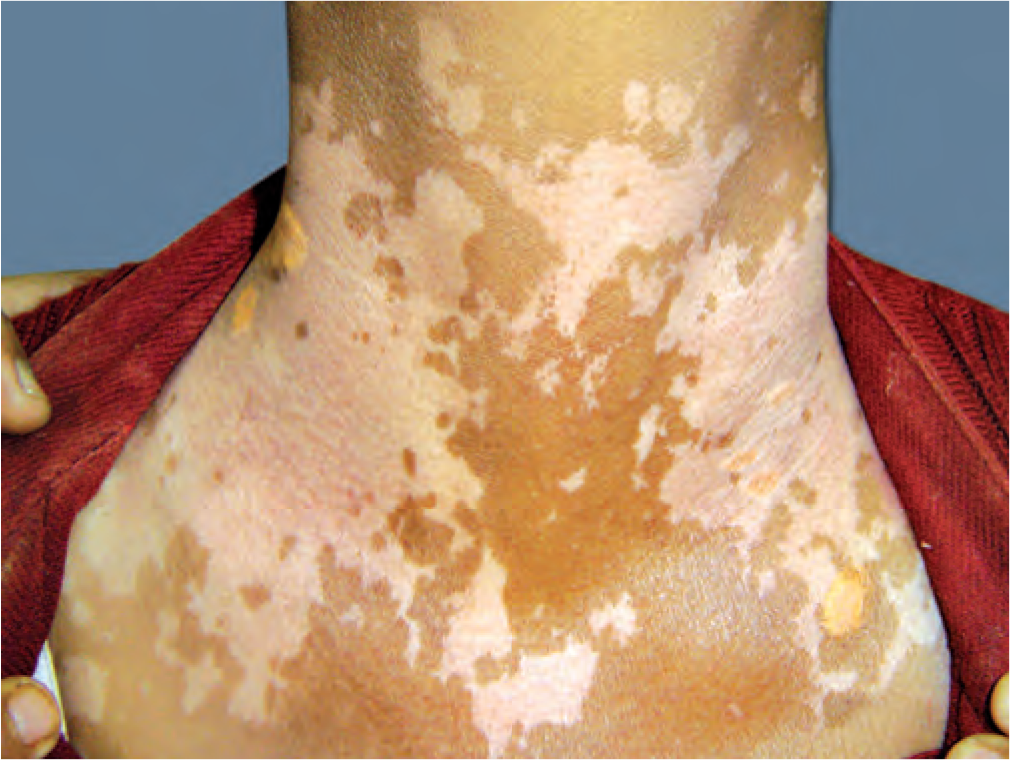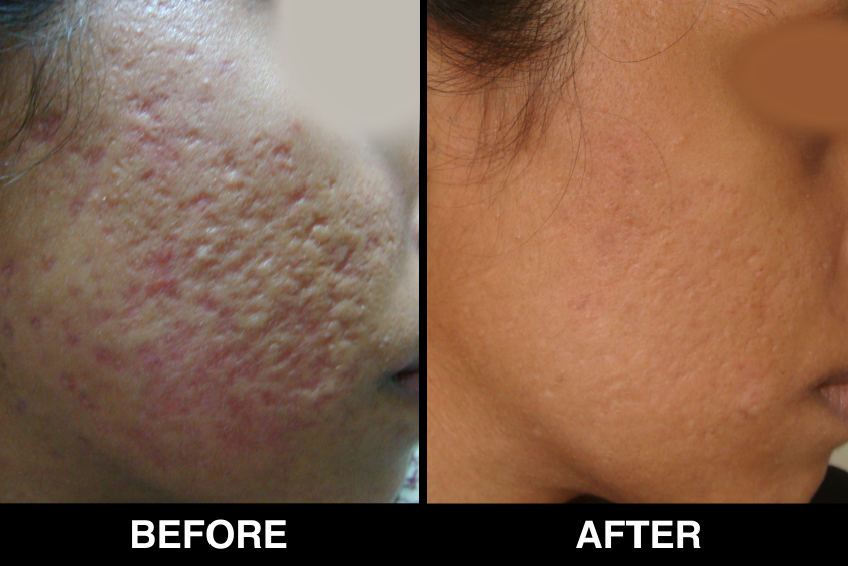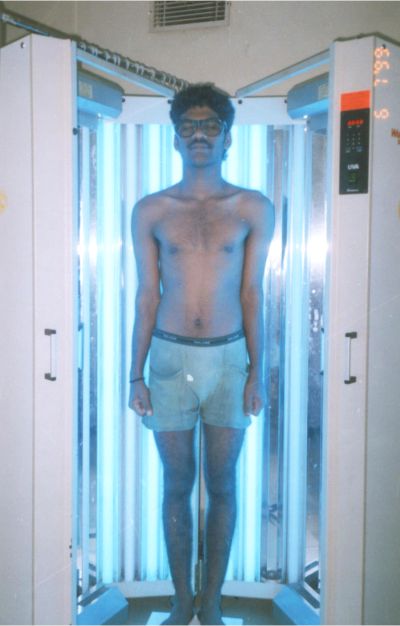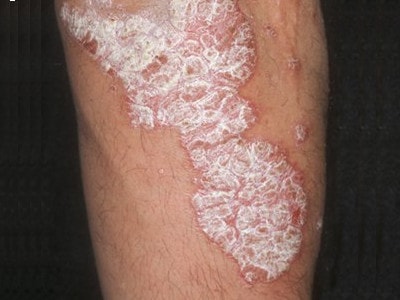What Is Segmental Vitiligo?
Usually, when you paint a picture in your head about any human being, you see them with uniform skin color. However, sometimes you will come across some people that have experienced a loss of natural skin color. They have patches of white in some parts or all over their bodies. These white patches essentially denote loss of pigment.
The loss of pigment or depigmentation gets termed vitiligo. Vitiligo gets divided into mainly two categories – non-segmental vitiligo and segmental vitiligo. The difference lies in the area it affects and other such traits.
Today, you will learn more about segmental vitiligo and how it typically affects a person in the early stages of life, anytime from infancy to adulthood. You will also find out the causes, symptoms, and treatment administered to reduce depigmentation in the affected parts of your body.
Related Blog: Vitiligo Guide: Causes, Symptoms, Treatments, and More
Segmental Vitiligo In Children
Segmental vitiligo gets recognition as a separate entity. It has varied differences from generalized or non-segmental vitiligo. Due to its early onset and progressive development of patches or macules, segmental vitiligo gets characterized by segmented patterns on the skin over 6-24 months, followed by rapid stabilization.
The main distinguishing factor lies in its unilateral distribution (where lesions do not cross the midline). The underlying cause of segmental vitiligo remains debatable. But it usually occurs due to an autoimmune response to melanocytes. The majority of segmental vitiligo cases occur from infancy to adulthood, usually before 30 years of age. While the affected skin remains asymptomatic, it could get affected due to sunburns. Moreover, it remains highly uncommon and can affect up to 5% of adults and up to 20% of children.
Related Blog: Vitiligo In Children: Early Signs, Causes And Treatment
Segmental Vitiligo Symptoms
When you get vitiligo – whether segmental or generalized – it affects the significant parts of the body. It can affect your skin, hair (scalp, eyebrows, beard, eyelashes), eyes, inside of the mouth, or even genitals.
Flat white patches or spots on the skin can get characterized as the only symptom of segmental vitiligo. The first time you might notice spots or patches is when your skin gets exposed to the sun. Other signs include:
- Slightly pale spots or patches that eventually turn white
- Irregularly shaped patches or a spot
- Inflamed edges with a slight red tone, sometimes resulting in itchiness
Most times, segmental vitiligo does cause any discomfort, irritation, or soreness in the skin. However, it affects only a handful of people and does not spread as quickly as generalized vitiligo (which impacts larger areas of your skin).
Segmental Vitiligo Causes
While the exact cause of segmental vitiligo remains unknown, you could find a few factors that may be behind its occurrence. Although it affects only 0.5-2% of the world’s population, if you have vitiligo or know someone who does, the causes may help you to reason and understand its treatment.
Causes:
- Melanocytes within the skin reduce or die-off
- Reduction in the production of skin pigment – melanin
- Autoimmune disorder or virus
- If your body’s nervous system goes awry (especially in the case of segmental vitiligo)
Although these causes could cause segmental vitiligo, studies do not yet show why it happens. However, it can affect people across the world of all skin colors and races.
Segmental Vitiligo Treatment
Since segmental vitiligo remains confined to one section of your body, determining the treatment guidelines gets easier. However, response to any treatment depends on how well your body gets accustomed to it. Most often, the treatment for segmental vitiligo includes both medical and surgical therapies. But, surgical treatment remains limited to the response you get via medical treatment. If it fails, your dermatologist may suggest surgical methods to improve the appearance of your skin.
The treatment for segmental vitiligo gets administered in two stages – the first line of treatment and the second line of treatment. The first line of treatment includes:
- Topical corticosteroids: You can gain some skin color back with the help of topical corticosteroid creams. Depending on the diagnosis, they alone may work for you very well, or the doctor might prescribe combination therapy.
- Topical immunomodulators: Calcineurin inhibitors have gained quite the reputation when it comes to their efficacy. Even the use of topical vitamin D analogs along with immunomodulators may work to reduce the appearance of white patches on your skin.
- Narrowband UVB therapy: It works very well in segmental vitiligo treatment as the UV light emitted focuses on small, targeted areas of your body. You may require two to three sessions of NB-UVB therapy per week for a few months for it to work. Again, this depends on the diagnosis.
- Phototherapy: It requires the use of both psoralen and UVA light to restore your skin color. It can treat both generalized and segmental vitiligo effectively. However, opt for this therapy only if advised by your doctor.
If the first line of treatment fails to garner the desired results, your doctor might suggest surgical therapy – the second line of treatment. It includes:
- Epidermal grafting
- Mini-grafting
- Transplantation of epidermal cell suspensions
While you may not always find the entire affected area of your skin to get re-pigmented, reducing the appearance of white spots or patches remains the ultimate goal. Any treatment requires an understanding of the skin condition, the extent of its spread, and a proper diagnosis and examination, which will lead to the most suitable form of treatment. Therefore, the responsibility of identifying and diagnosing segmental vitiligo lies with the skincare practitioner, who can share the right treatment method for you. Mostly, if you get affected with vitiligo, the cells that produce melanin die-off, thus regaining the loss may not always yield the needed results. However, if you detect segmental vitiligo early on, you can curb its spread and get the necessary treatment at the earliest.
Segmental Vitiligo Vs Non-Segmental Vitiligo
The primary difference between segmental and non-segmental vitiligo is that the former does not usually occur in response to autoimmune disorders (opposed to the latter). You will find a few more differences listed between the two below:
| Segmental Vitiligo | Non-segmental Vitiligo |
| Early age of onset | Variable age of onset |
| Unilateral in nature | Bilateral in nature |
| Spreads rapidly and stabilizes in a few years | Takes a chronic and progressive course |
| Predictable spread of white patches | Unpredictable spread of white patches |
| High percentage of white hair in the early stages of the disease | Variable percentage of white hair of lesional skin |
| Satisfactory response to autologous grafting | Unpredictable response after autologous grafting |
| Not associated with autoimmune disease | Often associated with personal or family history of autoimmune disease |
Although the difference between the two remains clear, you need to remember that vitiligo isn’t contagious.
Does Segmental Vitiligo Spread?
The uniqueness of segmental vitiligo remains in the fact that it does not cross the midline. Although it spreads rather quickly, more so than other forms of vitiligo, it stops in six months to a year. This characteristic of segmental vitiligo causes fears among those affected as it can make you feel as though the white patches may cover your entire body. However, the spread stops abruptly and could remain stable for the rest of your life.
Additionally, segmental vitiligo frequently turns the hair in the affected spot white quite quickly. Now, vitiligo spots with white hair do not usually respond very well to treatment. The reason behind it is that the melanocyte stem cells, which could produce more melanocytes, live in the hair follicles but most likely get destroyed if the hair turns white with vitiligo.
Is Segmental Vitiligo Curable?
Vitiligo is a skin condition that remains mostly uncurable. However, some specific therapies and treatments can help curb its spread. In the case of segmental vitiligo, medical treatment like topical corticosteroids or light therapy may work. They may reduce the appearance of white patches. However, in recent light, surgical treatment has come to the fore in helping you restore skin color with melanocyte-keratinocyte transplant procedure (MKTP).
Remember, early detection and prompt treatment can help cure segmental vitiligo. However, avoid self-diagnosis. If you see any signs or symptoms of segmental or non-segmental vitiligo, consult a skin specialist or dermatologist who can help you get to the bottom of it.
Read more: Can Segmental Vitiligo Be Cured?
Is Segmental Vitiligo Hereditary?
As you know, segmental vitiligo does not associate with autoimmune disorders or diseases. The usual cause remains difficulties in your body’s nervous system. However, since the primary reason is unknown, you might find vitiligo to occur due to hereditary characteristics (in some cases).
But only a proper diagnosis will help determine the exact cause of segmental vitiligo and its subsequent treatment. You might have to share your medical history and go through a physical exam to examine the cause and help the dermatologist administer a successful treatment.
How To Identify Segmental Vitiligo?
The single identification factor or sign of segmental vitiligo is that the white patches remain localized in one area of your body without crossing the midline. Usually, it spreads quickly. But after it halts, it remains permanent for most of your life. You will not find segmental vitiligo to affect all of your body.
Another sign of segmental vitiligo is that the hair in the affected area turns white due to the loss of melanocytes that rest in the hair follicles.
When To See A Doctor?
As soon as you notice any signs that indicate that you may have segmental vitiligo, you have to see a doctor immediately. In most skin conditions or otherwise, early detection is the crucial factor. Therefore, if you find any white patches or spots on your body, consult a dermatologist to help with its diagnosis and treatment.
Remember, only a qualified dermatologist or skin specialist can help you with the problem. So, find one that has renowned qualifications and substantial experience in the field of dermatology.
Summary
In conclusion, segmental vitiligo remains the less common type of vitiligo. However, the line of treatment suggested can help with the cure to a great extent. Being concentrated in one area allows the doctor to conduct a proper diagnosis and eventual treatment method, thus reducing the appearance of white patches or spots on your skin.
One thing you must remember, if you notice any signs or symptoms of vitiligo, you need to consult the dermatologist immediately. In most cases, early detection of any skin condition helps with the treatment process and sometimes may cure it altogether.
At Dr. Paul’s Skin Laser Centre, you will find treatment and consultation for all your skin and hair problems with experts in the industry. With the latest technologies and equipment, you will find yourself in safe hands should you choose to opt for any specific type of therapy. Even when it comes to segmental vitiligo treatment, you will receive efficient solutions that address all your concerns. Therefore, if you choose to opt for vitiligo treatment, give us a call at +919803-029-029 or fill up our online form on the website.
Book An Appointment













